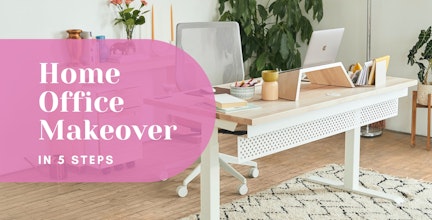Somebody Call the (Beauty) Doctor
No one thinks she looks perfect. We all have that appearance-related Achilles heel that shatters our self-confidence at times. And because our faces are the first things people see, they’re usually where most of our negative self-image stems from. Thighs and hips and breasts can be hidden beneath clothing, but even with plenty of makeup, there’s not much you can do to change your face. At least, there wasn’t until the miracle of modern medicine changed everything. Now, women who are really unhappy with the way they look can do something about it, but?as with all medical procedures?there are risks involved.
One Man’s Botulism Is Another Woman’s Botox
Americans love Botox. Even though our unemployment rate has climbed to 10.4 percent, Botox procedures in the United States increased by 1 percent last year, according to the American Society for Aesthetic Plastic Surgery (ASAPS).
The people who make up that 1 percent want smooth, unwrinkled skin. They want it so badly that they’re willing to pay an average of $350 to $500 per injection area to receive a dose of the bacteria that causes the food poisoning botulism.
That’s not to say that Botox injections aren’t a great option for some. Botox is the brand name for medicinal botulinum toxin type A, the purified, low-concentration form of the toxin that makes you sick. When injected in small doses into specific muscles, Botox blocks the chemical signals that cause muscles to contract, temporarily relaxing the facial muscles that create wrinkles and making skin look smoother and younger. The Food and Drug Administration (FDA) has approved it for adults ages eighteen to sixty-five, for the temporary treatment of moderate to severe frown lines between the eyebrows, but the Mayo Clinic staff notes that Botox is often used to treat other facial wrinkles and skin bands on the neck as well.
The FDA has also approved Botox to treat hyperhidrosis, or excessive sweating, and severe underarm sweating because it temporarily blocks the chemical signals that stimulate sweat glands.
But this is a toxin?a disease-causing bacteria?in question, not baby oil, so what are the side effects? The Mayo Clinic cites injection-site pain and bruising, redness, headache, flulike symptoms, nausea, and temporary facial weakness or drooping as minor complications associated with Botox injections, but it also mentions that the toxin may spread beyond the treatment area and cause botulism-like signs and symptoms, such as trouble swallowing and breathing, muscle weakness, and slurred speech.
Can a Laser Change Your Spots?
Every woman who’s woken up with an enormous zit the morning before an important date or work meeting knows how an eruption can crumble her confidence to dust. Imagine that single spot multiplied dozens of times and present on a daily basis, and you know what it’s like to live with chronic acne. It’s no surprise that people haunted by memories of being called “Pizza Face” and “Road Map” (because you can connect the dots) would do just about anything in search of a clearer complexion.
The Mayo Clinic staff explain that acne happens when sebum, an oily substance that lubricates hair and skin, gets trapped in hair follicles along with dead skin cells and solidifies as a soft plug. As the plug grows, the follicle wall ruptures, allowing more oil and skin cells to accumulate. Bacteria triggers further inflammation and infection.
Acne treatments work by reducing oil production, by increasing cell turnover, or by fighting the acne-causing bacteria Propionibacterium acnes (P. acnes), and many work in combination on two or all of these fronts.
A dermatologist’s first course of action in managing acne is to prescribe topical treatments and oral antibiotics. Retinoids, derived from vitamin A, promote cell turnover and prevent the plugging of the hair follicle, and benzoyl peroxide, combined with topical antibiotics, dries up oil, kills bacteria, and sloughs off dead skin cells. Most topical applications don’t have any serious side effects beyond redness and irritation, but oral antibiotics?especially when taken for long periods of time?can lead to antibiotic resistance and yeast infections. According to the Mayo Clinic staff, combination therapies are less likely to lead to bacterial resistance.
For those who don’t accept the risks of long-term antibiotic use to treat their acne, there are other options, though they are expensive and few insurance companies cover them. Laser and light therapies?including blue light therapy, pulsed light and heat energy therapy, and diode laser treatment?reduce oil production, fight P. acnes, and lessen the appearance of existing acne scars. They may prove effective for those with severe acne, and have not yet yielded any serious side effects beyond temporary redness and swelling of the treated areas. These therapies are still in their developing stages, though, so their actual effectiveness and long-term risks are unknown.
Keep Your Skin Peeled
Two other remedies for acne and wrinkles, as well as for other skin imperfections, are chemical peels and microdermabrasion. And these treatments do exactly what they sound like: they strip the skin from your face.
Now, we do lose billions of skin cells every day from our bodies, so helping the process along isn’t such a bad thing. In fact, it makes sense to remove dead skin cells before they clog pores and become pimples. But Samantha’s beet-red face in season five of Sex and the City taught a generation of women that when you play with chemical peels, you might get burned.
Dermatologists and cosmetic specialists perform chemical peels to lessen the appearance of fine lines, sun damage, and minor facial scars, according to the Mayo Clinic staff, but the process of applying glycolic or salicylic acid to the skin has achieved more successful results in treating acne. Chemical peels help to exfoliate skin and generate new cell growth, and are often used in combination with acne creams or gels to allow the medication to penetrate further into the skin. Potential risks include redness, blisters, scaling and crusting, scarring, infection, and abnormal skin coloring.
If you think you really need that deep exfoliation, try a slightly less harmful alternative like microdermabrasion. This treatment involves a hand-held device that blows crystals onto skin, gently sloughing off dead skin and unclogging pores; then a vacuum tube removes the debris. It’s like a sander for your face. Like a chemical peel, microdermabrasion is usually a complement to other skin treatments. But unlike chemical peels, it has almost no scary side effects.
Bargain for Beauty?
Helen of Troy’s face launched a thousand ships. Is yours worth all the health risks, the money, the time that these skincare procedures entail? Maybe. After all, our faces give the world its first?and sometimes its only?impression of who we are. But if you’re going to put your best face forward by getting one of these treatments, you need to know what you’re up against before you dive in.
What’s your take on high-tech beauty treatments?
Originally written by Molly Mann for DivineCaroline.com







 (1)_05192023144508.jpg?max-w=432&max-h=220&fit=crop&auto=format)






_01252024061712.jpg?max-w=432&max-h=220&fit=crop&auto=format)

_10242023164832.jpg?max-w=432&max-h=220&fit=crop&auto=format)


_08172023152001.jpg?max-w=432&max-h=220&fit=crop&auto=format)


 (6)_07082023175312.jpg?max-w=432&max-h=220&fit=crop&auto=format)